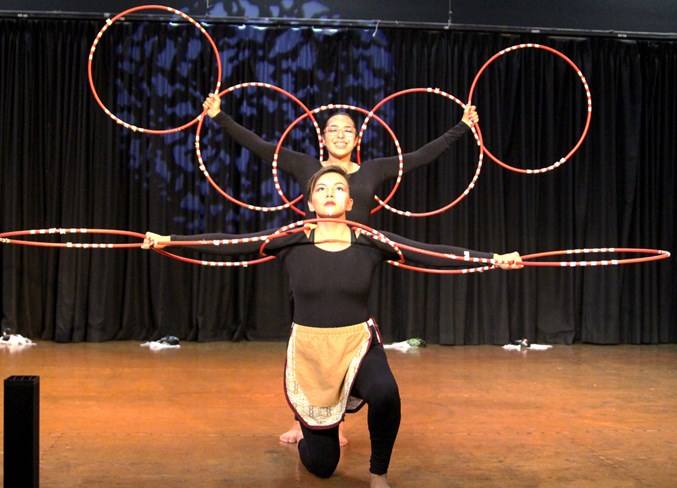It was a story of self-identification through the art of movement to share the history of struggles for Indigenous youth.
The 2018 Kehewin Native Dance Theatre summer youth training program performed their show Unmasking Identity at the Lyle Victor Albert Centre on Thursday, Aug. 3.
The show was written by the dancers themselves. The themes came from their desire to educate people on their culture.3
Through music and movement, they shared the story of a two-spirited child, which is someone who identifies as having a masculine and feminine spirit, and their adopted brother who ran away from a residential school. Both characters move to the city, and struggle with alcohol and drugs.
The brother attempts to get help after he becomes troubled by his actions. But, the monster in his head prevents from him reaching out. His journey to healing begins after he attends a Horse Dance Ceremony, and he comes to a life-changing realization.
“He starts to realize that through ceremony and culture he can find himself,” explained artistic director Rosa John.
The story was told through a number of traditional powwow dances that introduced each scene, including a jingle dress dance for healing and a hoop dance at the end.
Long-time program member Chance Kehewin said, “We want to teach other people about the culture, and what we still carry on to this day.”
Educating audience members on the past was crucial during the planning process, and learning from the past was a key element for everyone.
“There’s a lot that people don’t really know, or believe, about history,” detailed participant Stryder Daibo-Tailfeathers. “It’s good to move forward by reconciliation to restore relationships between Indigenous and non-Indigenous peoples.”
Originally, the group wanted to convey a love story for the performance.
“We had an individual in the group that is two-spirited,” John noted. “They brought another edge to the love, and what they had experienced.”
During brainstorming, the group pulled elements from their own lives to weave into the story.
“It goes with whatever belongs to us, whatever relates to us,” explained program member Chloe Houle-Dion. “It’s still in there, and it’s not like we created these characters and don’t know who they are. We know where they’re from, and we jump into them.”
The historical facts were important to incorporate, such as the desolation and starvation that the trains brought for Indigenous peoples, and they knew that the show was about a lot more than love.
John said, “We realized the show wasn’t about love alone. It was about identity and recognizing who we are as individuals.”
Participants learned powwow dances, contemporary dance, and how to work with choreography during the five-week program.
The Kehewin Native Dance Theatre will take the show on the road in March for an Ontario tour. They will perform at two schools per day, a community centre, and a theatre during the seven-day event.



